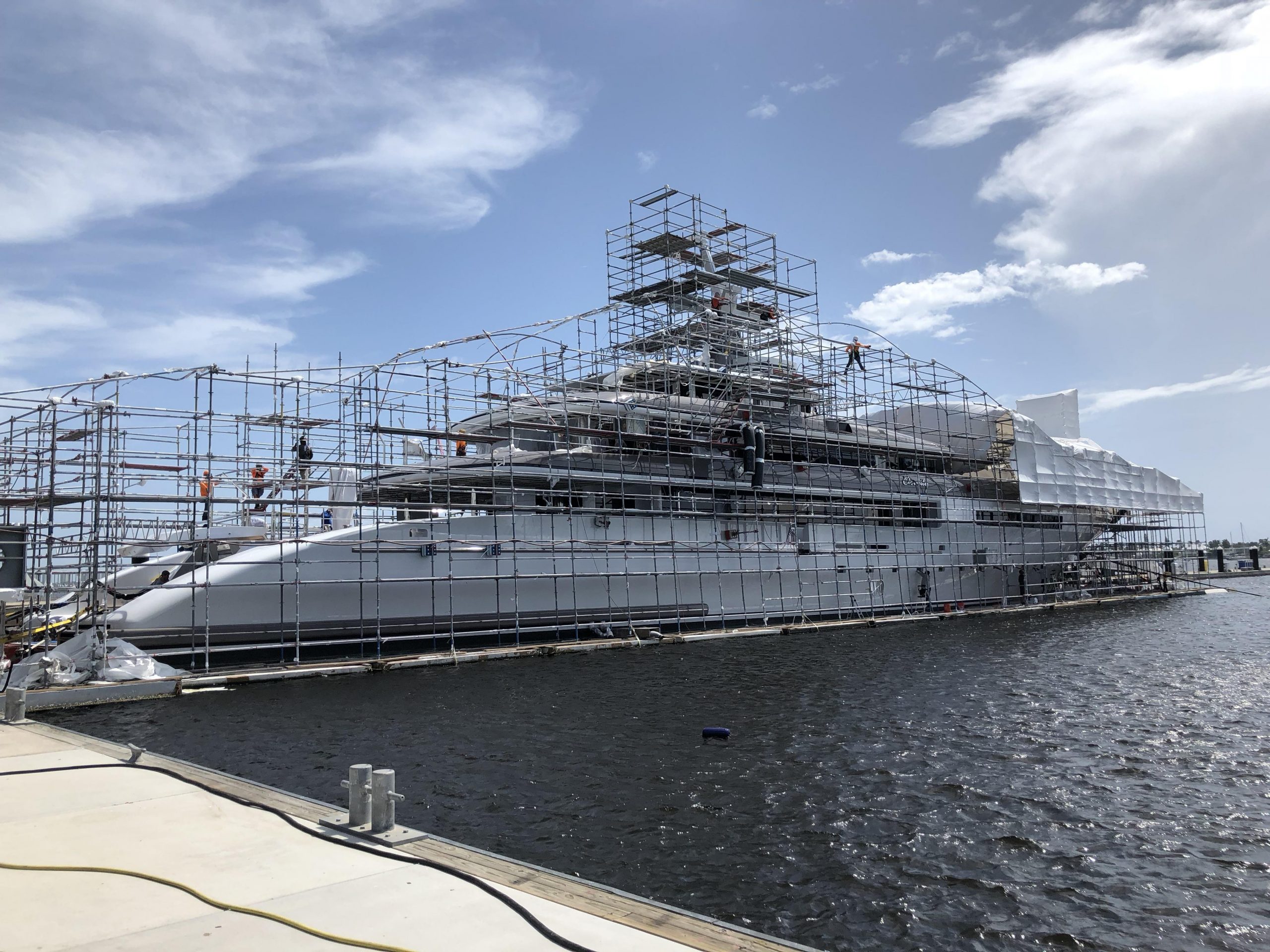Insight & Analysis. Supply chain issues: managing risk and disruption in the superyacht industry


The effects of global disruption to the supply chain, increasing raw material costs and limited shipyard capacity, are starting to be felt across the superyacht new build and refit sectors. Hill Robinson assesses how these factors could impact projects and deliveries and what these current market conditions mean for clients.
The good news and the bad news
For the first time in over five years, the superyacht industry is genuinely busy – from new build to refit, and every sector in between. While this market buoyancy is a positive sign, the downside is that shipyards are full, or filling very rapidly, and the prime contractors are also becoming busy. With more new build and refit projects than usual competing for their attention, there is a shortage of skilled subcontractors to meet the demand.
Furthermore, this spike in orders is coinciding with a disrupted global supply chain that is still being impacted by the manufacturing shutdowns and labour shortages caused by the Covid-19 pandemic, as well as other factors related to transport and logistics. Kevin Laverty, Director of Projects at Hill Robinson, is already observing the effects of this across his fleet of new build and refit projects, the most concerning element of which is the worldwide shortage of silicon chips, which is affecting the supply of electronic goods.
“The types of items that we are seeing become unavailable are the network switches and devices that make up the AV and IT networks on board superyachts,” notes Kevin. “It’s not affecting the consumer side so dramatically – I think due to the buying power of a Samsung or an LG – but the availability of devices from smaller companies is becoming problematic because of this worldwide shortage of silicon chips.”
Another supply chain issue that is currently affecting the superyacht market is the increasing prices of raw materials – the cost of steel, copper and particularly aluminium has skyrocketed due to increased demand as well as the increasing cost of production. The inflated prices will have the most impact on the new build sector due to the way in which most superyachts are built. As Kevin explains; “A typical superyacht will have a steel hull and an aluminium superstructure, with aluminium making up about 40 per cent of the overall raw metal boat. If 40 per cent of that boat increases by 40 per cent in cost, that’s quite a significant hit”.
Higher costs and delays?
Increased prices of raw materials and shortages of labour or integral components risk impacting the overall cost and timely delivery of both new build and refit projects. Whether this happens depends on how long these current market conditions continue, which is impossible to predict. Minimising disruption, however, is in the hands of the shipyards.
“Those established shipyards with full order books will be actively engaging their supply chain to minimise the risk to their deliveries,” reassures Kevin. “The main challenge for them, however, is that superyachts are very bespoke, and they can probably only estimate how many tonnes of aluminium they are going to need year on year within a 10 per cent variability. And if they underestimate by 10 per cent, that is going to cause a delay. Any significant increases in prices from the supply chain are also likely to be passed on to the end customer (if the initial price of the project was realistic).”
Minimising risk and disruption
The effects of these supply chain issues are already being felt across the superyacht industry and, as such, Hill Robinson is having to be proactive in addressing them. Not only does the project management team have the technical know-how and expertise to keep abreast of such market dynamics and see the challenges coming, but Hill Robinson’s in-house procurement team is also being fed information by its suppliers to have an overall view of the difficulties that the market faces.
“Our in-house procurement capability enables us to generate a wealth of historical trend data,” advises Kevin. “By analysing the demand across our fleet of various vessels with different owners, we have an overview of consumption. And that allows us to advise clients about when they need to start ordering certain items in time for upcoming projects. It’s data-driven foresight – not just opinion – based on a real-time view of what we are seeing in the supply chain.”
The buoyancy of current market conditions is another reason for cautiousness: now, more than ever, it’s important that buyers are astute when making significant purchase decisions. “There was a similar feeding frenzy in the superyacht industry in 2005-6, where we saw the emergence of some of the very worst brokerage practices,” reflects Kevin. “Then, during the 2008-9 downturn, a lot of those contracts were cancelled and there’s still a lot of half-built hulls in existence today that own their parentage to that time.”
With market activity levels high again, Kevin is starting to see some of the same elements creep back into the industry now. “We’re seeing the pop-up shipyard again, the virtual builder and the unbelievably-priced project,” he cautions. “If we’re not careful, I think that the market is potentially exposed to the same sort of practices that we saw back in the worst days of 2005-6.”
Never before has it been more important for clients to receive independent and unbiased advice to help them navigate through this environment and ensure that they don’t become a victim of buoyant market conditions.






